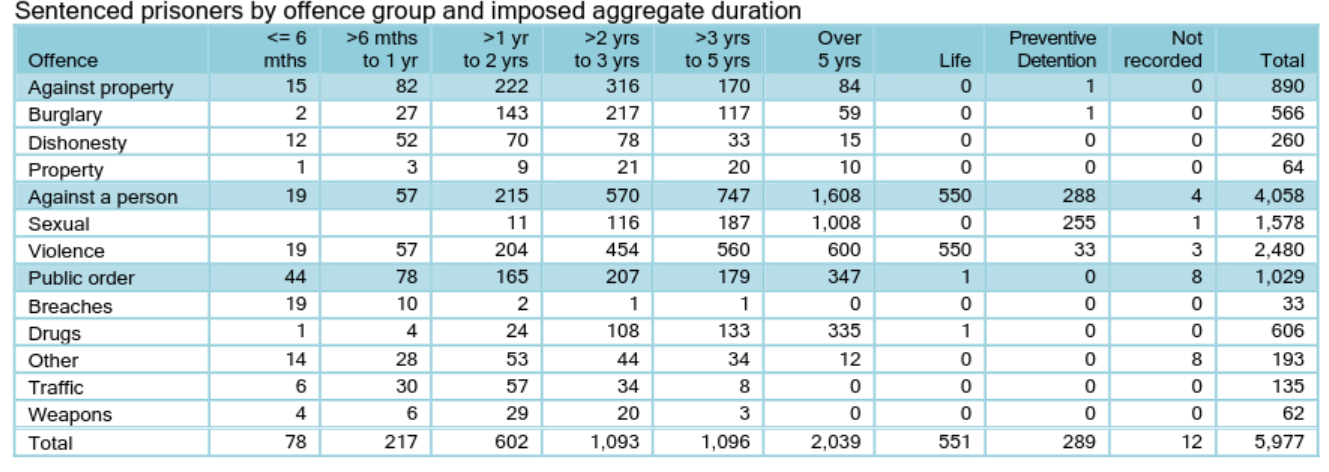Yes, I agree that locking people up for non-violent crimes is generally a poor use of resources, that said it is fairly rare for people to be imprisoned in NZ now for non-violent offending only, not that I’m saying it never happens, but it is uncommon.
I do think the use of a computer model is an innovation worth looking at, and I think that people here will be more open to the idea now given the recent performance of the judiciary. I would want the model to be programmed to be highly risk averse however, even if that ends up costing more in prison resource
Just looking through the 2020 stats here, in this PDF, it has this table:
That’s sentenced prisoners, so my understanding is that in 2020, almost 6,000 people were sentenced to prison, and of those a little under 1/3 were not crimes against a person. That’s still a pretty big proportion, though I’d guess most of the others we’d probably agree should be in prison if we had more detail.
Interestingly, it seems Corrections do use a Risk of Reconviction model, that they describe without much detail here, but then it links to a PDF with a lot more details. It does seem to take race into account, and treats Māori different from “Caucasian”, though I didn’t spend enough time with it to try to understand how it fits together.
The standout to me is that the model was written in 1999, and the website says it’s currently in use, so I wonder if it’s due for an update.
Thinking about this more, I think this model is probably not used in sentencing. It’s under the Department of Corrections, so it’s probably more likely to be used when deciding who should be more closely monitored and decisions like that. It’s probably not used by judges, though it’s possible Corrections may bring the model to court to argue their case.
Yes, I agree that locking people up for non-violent crimes is generally a poor use of resources, that said it is fairly rare for people to be imprisoned in NZ now for non-violent offending only, not that I’m saying it never happens, but it is uncommon.
I do think the use of a computer model is an innovation worth looking at, and I think that people here will be more open to the idea now given the recent performance of the judiciary. I would want the model to be programmed to be highly risk averse however, even if that ends up costing more in prison resource
Just looking through the 2020 stats here, in this PDF, it has this table:
That’s sentenced prisoners, so my understanding is that in 2020, almost 6,000 people were sentenced to prison, and of those a little under 1/3 were not crimes against a person. That’s still a pretty big proportion, though I’d guess most of the others we’d probably agree should be in prison if we had more detail.
Interestingly, it seems Corrections do use a Risk of Reconviction model, that they describe without much detail here, but then it links to a PDF with a lot more details. It does seem to take race into account, and treats Māori different from “Caucasian”, though I didn’t spend enough time with it to try to understand how it fits together.
The standout to me is that the model was written in 1999, and the website says it’s currently in use, so I wonder if it’s due for an update.
Thanks for this, very informative
Race absolutely should never be taken into account in any sentencing model, it is irrelevant, for that reason alone it needs updating
Thinking about this more, I think this model is probably not used in sentencing. It’s under the Department of Corrections, so it’s probably more likely to be used when deciding who should be more closely monitored and decisions like that. It’s probably not used by judges, though it’s possible Corrections may bring the model to court to argue their case.